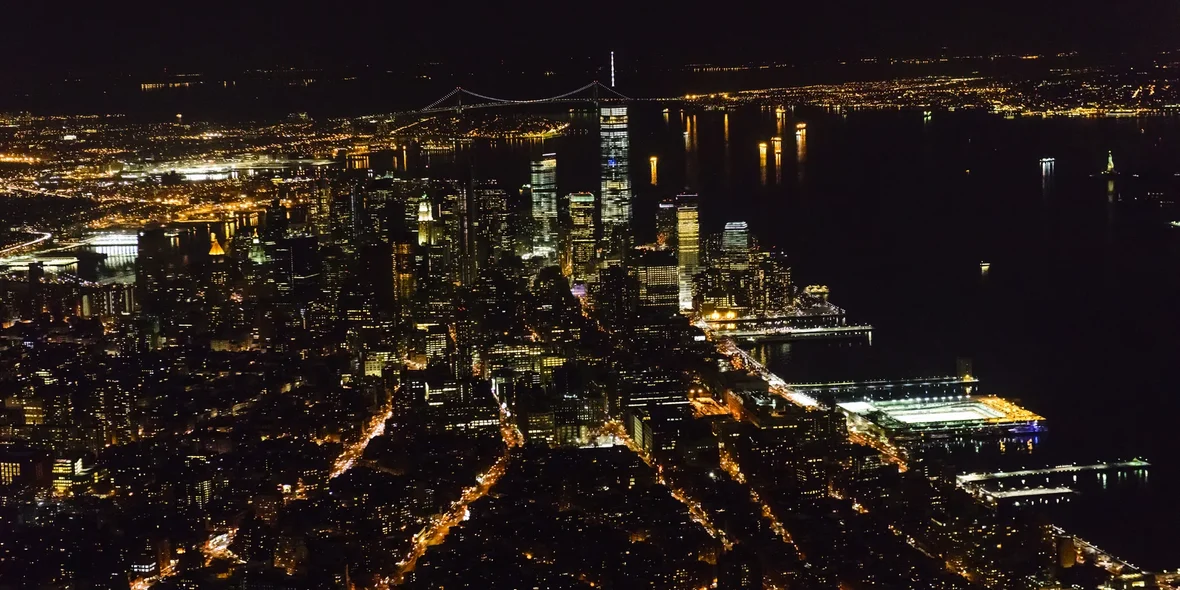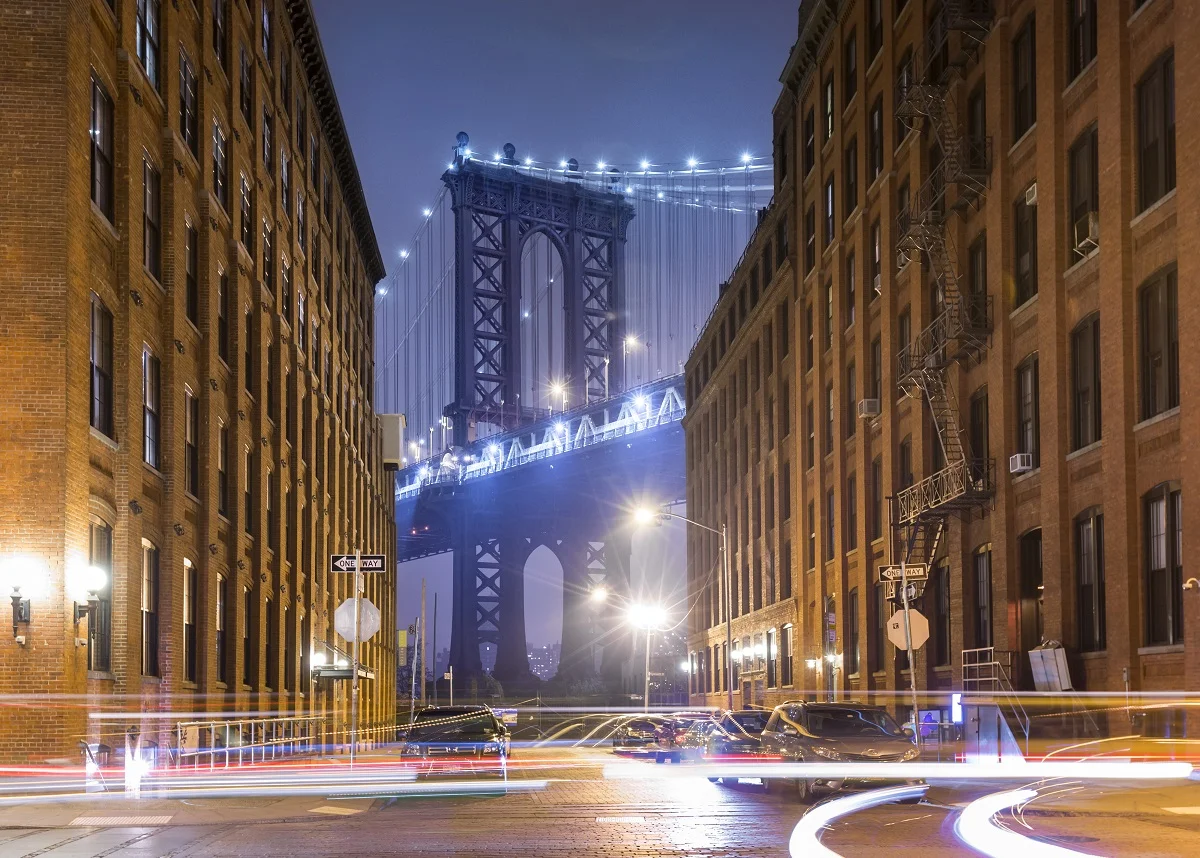
Best New York Suburbs: Where to Live and Why
New York, with a population of approximately 8.5 million, remains one of the most attractive cities in the world. However, the high cost of living in the metropolis forces many to look for more affordable options in the suburbs. In this article, we will look at 10 promising suburbs of New York, located within a radius of 30 miles (48 kilometers) from the city center.
What to Look for When Choosing a Suburb
Points to pay attention to before moving:
- Travel time. Assess how much time you are willing to spend on the road every day. Consider not only the distance but also the frequency of traffic, especially during rush hours.
- The cost of living. In addition to home prices, consider property taxes, utility costs, prices at local stores and restaurants, and the cost of commuting to work.
- Safety. Find out about the crime rate in a particular suburb.
- Quality of schools. For families with children, this is often a key factor. Study not only the overall ratings but also reviews from parents and the availability of special programs and extracurricular activities.
- Development plans. Study the local authorities' plans for the development of the area. This may include the construction of new residential complexes, infrastructure development, and the opening of new businesses and jobs.
- Ecology. Assess the air quality, the presence and accessibility of green areas, noise levels, and proximity to industrial facilities.
- Cultural life. Find out about local museums and galleries, theaters and concert venues, annual festivals and events, sporting events, and teams.
- Opportunities for remote work. Evaluate the availability of coworking spaces, cafés with good Wi-Fi, and public spaces suitable for work.
Top 10 New York Suburbs
Based on the criteria listed above, we have compiled a list of 10 New York City suburbs that are best suited for living.
1. Hoboken, New Jersey
- Location: across the river from Manhattan. It is a small city in Hudson County, New Jersey, and is located on the west bank of the Hudson River, across from Manhattan.
- Road: averages 10–15 minutes to the World Trade Center station, or 14–20 minutes to 33rd Street in Manhattan on the PATH train.
- Atmosphere: a lively center with many restaurants and shops.
- Pros: views of Manhattan, cheaper than in the city.
- Transport: the PATH train operates 24 hours a day, with intervals depending on the time of day. The NY Waterway ferry runs every 10–20 minutes during peak hours. NJ Transit buses provide additional routes to various parts of New Jersey.
- Education: the average school rating is 8/10.
- Median house price: $875,000.
- Culture: Hoboken Museum, numerous galleries.
- Ecology: good air quality, lots of parks along the waterfront.
- Technologies: gigabit Internet is available from several providers.
- Remote work: several coworking spaces, including Mission 50 and Hoboken Business Center.
2. Greenwich, Connecticut
- Location: 30 miles (about 48 km) from Manhattan. It is a coastal city in southwestern Connecticut.
- Road: 40 minutes by express train to Grand Central station. This is one of the main routes for those who travel to New York on a daily basis.
- Atmosphere: picturesque coastal town.
- Pros: high-end shopping, great schools, beaches.
- Cons: expensive, but low property taxes.
- Transport: Metro-North Railroad trains run about 30 minutes apart during rush hours. I-95 also passes through the city, providing easy access to other regions.
- Education: school rating 9/10.
- Median house price: $1,750,000.
- Culture: Bruce Museum, Greenwich International Film Festival.
- Ecology: excellent air quality, many parks and reserves.
- Technologies: high-speed fiber optic internet is available throughout the city.
- Remote work: several business centers with coworking spaces, including Greenwich Office Park.
3. Yonkers, New York
- Location: about 20 miles (about 32 km) north of Manhattan. It is the largest city in Westchester County and the fourth-largest city in New York State.
- Road: Travel time on Metro-North trains from Yonkers to Grand Central Terminal is about 25–35 minutes, depending on which train you choose (express or local).
- Atmosphere: a mixture of urban and suburban environments.
- Pros: more affordable than many Westchester cities.
- Transport: Metro-North trains depart approximately every 15 to 30 minutes, depending on the time of day and day of the week. The Bee-Line bus system also provides transportation within the city and to other Westchester County communities.
- Education: the average school rating is 6/10.
- Median house price: $525,000.
- Culture: Hudson Art Museum, Untermeyer Gardens.
- Ecology: improving air quality, ongoing revitalization of the waterfront.
- Technologies: gigabit internet is available in most areas.
- Remote work: a growing number of coworking spaces, including Yonkers CoWorking Space.
4. Montclair, New Jersey
- Location: about 12 miles (about 19 km) west of Manhattan. It is a city in Essex County, New Jersey, known for its scenic and culturally rich environment.
- Road: travel time on the NJ Transit train from Montclair to Penn Station in Manhattan is typically about 40–50 minutes.
- Atmosphere: Diverse community, strong cultural scene
- Pros: museums, theaters, good schools.
- Transport: NJ Transit trains depart approximately every 20 to 30 minutes during rush hours. There is also a bus service through DeCamp Bus Lines that provides transportation to New York City and other cities.
- Education: school rating 8/10.
- Median house price: $825,000.
- Culture: Montclair Museum of Art, Wellmont Theatre.
- Ecology: good air quality, many parks and reserves.
- Technologies: high-speed Internet is available from several providers.
- Distant work: several coworking spaces, including Work and Play and The Office.
5. White Plains, New York
- Location: about 25 miles (about 40 km) north of Manhattan. It is a major city in Westchester County, New York, and is an important business and administrative center for the region.
- Road: travel time on the Metro-North train from White Plains to Grand Central Terminal Station in Manhattan is typically about 35–45 minutes.
- Atmosphere: a combination of residential areas and a vibrant center.
- Pros: large shopping centers, various restaurants.
- Transport: Metro-North trains depart approximately every 20 to 30 minutes during rush hours. The Bee-Line bus system also provides good connections.
- Education: the average school rating is 7/10.
- Median house price: $475,000.
- Culture: Westchester County Arts Center, White Plains Performing Arts Center.
- Ecology: improving air quality, several city parks.
- Technologies: gigabit internet is available in many areas.
- Remote work: several modern coworking spaces, including Serendipity Labs.

6. Long Island City, Queens
- Location: Long Island City (LIC) is located across the East River from Manhattan, in the western borough of Queens in New York City.
- Road: just one subway stop from Midtown Manhattan.
- Atmosphere: former industrial area turned fashionable
- Pros: water parks, MoMA PS1, breweries, galleries
- Transport: subway lines 7, E, M, and G serve Long Island City, with trains running every 3–10 minutes during rush hours. NYC Ferry also provides transportation services every 20–30 minutes.
- Education: school rating 6/10.
- Median house price: $950,000.
- Culture: MoMA PS1 an d Socrates Sculpture Park constantly host art exhibitions and events.
- Ecology: improving air quality, new waterfront parks.
- Technologies: high-speed fiber internet is widely available.
- Remote work: many modern coworking spaces, including WeWork and Spaces.
7. Stamford, Connecticut
- Location: about 30 miles (about 48 km) northeast of Manhattan. It is a large city in southwestern Connecticut.
- Road: 45–60 minutes on Metro-North to Grand Central.
- Atmosphere: a mix of offices, residential areas and waterfront.
- Pros: varied cuisine, shopping centers, parks.
- Transport: Metro-North (every 20–30 minutes); CT Transit.
- Education: the average school rating is 7/10.
- Median house price: $575,000.
- Culture: Stamford Museum & Nature Centre, Palace Theater
- Ecology: good air quality, several coastal parks.
- Technologies: gigabit internet is available in most areas.
- Remote work: several business centers with coworking spaces, including Comradity.
8. Bronxville, New York
- Location: about 15 miles (about 24 km) north of Manhattan. This is a small, upscale town in Westchester County, New York.
- Road: 30 minutes on Metro-North to Grand Central.
- Atmosphere: a cozy town with Tudor-style architecture.
- Pros: excellent schools, pedestrian center.
- Cons: very expensive.
- Transport: Metro-North (every 20–30 minutes); Bee-Line Bus System.
- Education: school rating 9/10.
- Median home price: $2,200,000+
- Culture: Bronxville Women's Club, Concordia Conservatory
- Ecology: excellent air quality, several parks and reserves.
- Technologies: high-speed fiber optic internet is available.
- Remote work: limited number of coworking spaces, but many cafés with Wi-Fi.
9. Jersey City, New Jersey
- Location: across the Hudson River from Lower Manhattan.
- Road: 10 minutes by PATH train to Manhattan.
- Atmosphere: a diverse, fast-growing city.
- Pros: Liberty State Park, diverse cuisine, art
- Transport: PATH (every 4–20 minutes); NY Waterway Ferry (every 15–30 minutes); NJ Transit Light Rail.
- Education: The average school rating is 6/10.
- Median house price: $700,000.
- Culture: Mana Museum of Contemporary Art, Liberty Science Center
- Ecology: improving air quality, several new parks.
- Technologies: Gigabit internet is widely available.
- Remote work: many modern coworking spaces, including Indiegrove and Andco.
10. Tarrytown, New York
- Location: about 25 miles (about 40 km) north of Manhattan, in Westchester County, New York.
- Road: 35–45 minutes on Metro-North to Grand Central.
- Atmosphere: a historic community on the banks of the Hudson River with a cozy downtown.
- Pros: near Sleepy Hollow, Lyndhurst Mansion, and Rockefeller Park.
- Transport: Metro-North (every 30–60 minutes); Bee-Line Bus System.
- Education: school rating 7/10.
- Median house price: $675,000.
- Culture: historic center of Sleepy Hollow, Lyndhurst Mansion.
- Ecology: excellent air quality, many parks and reserves.
- Technologies: High-speed internet is available in most areas.
- Remote work: limited number of coworking spaces, but many cafés with Wi-Fi.
Suburb Сomparison Сhart
Now let's present the named cities and their characteristics in this comparative table:
|
Suburb |
Time to Manhattan |
Average house price |
School rating (1-10) |
Crime level |
Availability of transport |
Green areas |
Cultural opportunities |
|
Hoboken |
10 min |
$875,000 |
8 |
Short |
High |
Average |
High |
|
Greenwich |
40 min |
$1,750,000 |
9 |
Very low |
Average |
High |
High |
|
Yonkers |
30 min |
$525,000 |
6 |
Average |
Average |
Average |
Average |
|
Montclair |
40 min |
$825,000 |
8 |
Short |
Average |
High |
High |
|
White Plains |
35 min |
$475,000 |
7 |
Short |
High |
Average |
Average |
|
Long Island City |
10 min |
$950,000 |
6 |
Short |
Very high |
Average |
High |
|
Stamford |
45-60 min |
$575,000 |
7 |
Short |
Average |
Average |
Average |
|
Bronxville |
30 min |
$2,200,000+ |
9 |
Very low |
Average |
High |
Average |
|
Jersey City |
10 min |
$700,000 |
6 |
Average |
High |
Average |
High |
|
Tarrytown |
35-45 min |
$675,000 |
7 |
Short |
Average |
High |
Average |
Remember that the ideal suburb is different for everyone. What suits one family may not suit another. Therefore, it is important to carefully research all the options, visit the places you like in person, and perhaps even live there for a while before making a final decision.
Good luck finding your ideal place to live!
Author
I am responsible for editorial work. I write expert interviews and guides.




















